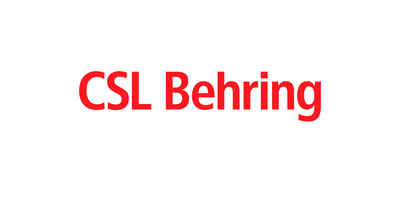Global biotherapeutics leader CSL Behring announced that the European Medicines Agency has accepted the Marketing Authorization Application for etranacogene dezaparvovec under its accelerated assessment procedure.
- Marketing Authorization Application (MAA) for etranacogene dezaparvovec will be reviewed under accelerated assessment and has the potential to be the first gene therapy for patients living with hemophilia B
- MAA filing is supported by the phase 3 HOPE-B study which demonstrated durable and sustained therapeutic effect after a single infusion
- Milestone underscores CSL Behring's promise to develop and deliver a truly unique portfolio of patient-focused therapies
MARBURG, Germany, March 28, 2022 /PRNewswire/ -- Global biotherapeutics leader CSL Behring today announced that the European Medicines Agency (EMA) has accepted the Marketing Authorization Application (MAA) for etranacogene dezaparvovec (EtranaDez) under its accelerated assessment procedure. Etranacogene dezaparvovec is an investigational adeno-associated virus five (AAV5)-based gene therapy administered as a one-time treatment for hemophilia B patients with a severe bleeding phenotype. If approved, etranacogene dezaparvovec will provide people living with hemophilia B in the European Union (EU) and European Economic Area (EEA) with the first-ever gene therapy treatment option that significantly reduces the rate of annual bleeds after a single infusion. Accelerated assessment potentially reduces the timeline once the MAA is accepted for review and is provided for a medicinal product when the therapy is expected to be of major public health interest, particularly pertaining to therapeutic innovation.
"As the first gene therapy candidate for hemophilia B, this pivotal regulatory milestone brings CSL Behring one step closer to delivering on the promise of gene therapy for the bleeding disorders community," said Emmanuelle Lecomte Brisset, Head of Global Regulatory Affairs at CSL Behring. "We look forward to working with regulatory authorities to bring the transformative potential of gene therapy to people living with this debilitating, life-long condition."
The MAA is supported by positive findings from the pivotal HOPE-B trial, the largest gene therapy trial in hemophilia B to date. Hemophilia B patients classified as having a severe bleeding phenotype treated with etranacogene dezaparvovec demonstrated reduced adjusted annualized bleed rate (ABR) by 64% and demonstrated superiority to prophylaxis treatment at 18 months post-treatment compared to a 6-month run in period. Additionally, there was stable and durable increases in mean Factor IX (FIX) activity levels. Etranacogene dezaparvovec was specifically designed to make near-normal blood-clotting ability possible by addressing the underlying cause of the condition: a faulty F9 gene that causes a deficiency in clotting Factor IX (FIX).
"The acceptance of etranacogene dezaparvovec for review by the EMA furthers our relentless pursuit to improve the lives and well-being of those living with hemophilia B and other rare and serious medical disorders," said Bill Mezzanotte, Executive Vice President, Head of R&D and Chief Medical Officer for CSL Limited. "We are proud to work with uniQure to be at the forefront of this scientific advancement which aims to make hemophilia B a secondary part of a patient's life instead of a constant concern."
The multi-year clinical development was led by uniQure (Nasdaq: QURE) and sponsorship of the clinical trials in the United States has transitioned to CSL Behring after its acquiring global rights to commercialize etranacogene dezaparvovec. CSL Behring is in the process of transitioning sponsorship of the clinical trials in the European Union.
About Hemophilia B
Hemophilia B is a life-threatening degenerative disease. People with the condition are particularly vulnerable to bleeds in their joints, muscles, and internal organs, leading to pain, swelling, and joint damage. Current treatment includes life-long prophylactic infusions of FIX to temporarily replace or supplement low levels of the blood-clotting factor.
About Gene Therapy in Hemophilia B
Gene therapy has the potential to make a functional cure possible in hemophilia B. Gene therapy achieves this with modified non-infectious viruses called "vectors" that can enter certain cells. Vectors carry genetic instructions to specific cells. Once delivered, the new genetic instructions allow the cellular machinery to produce their own stable levels of FIX. A certain type of vector, called an adeno-associated virus, or AAV, dissolves after delivering its genetic instructions. These genetic instructions remain in the target cells, but never actually become a part of a person's own DNA.
About Etranacogene Dezaparvovec
Etranacogene dezaparvovec (also known as CSL222, previously known as AMT-061) uses a specific type of AAV, called AAV5, as its vector. The AAV5 vector carries the Padua gene variant of Factor IX (FIX-Padua), which generates FIX proteins that are 5x-8x more active than normal. Preclinical and clinical data show that AAV5-based gene therapies may be clinically effective in up to 95 percent of hemophilia B patients with pre-existing antibodies to AAV vectors, thereby potentially increasing patient eligibility for treatment compared to other AAV gene therapy product candidates.
About the Pivotal HOPE-B Trial
The pivotal Phase III HOPE-B trial is a multinational, open-label, single-arm study to evaluate the safety and efficacy of etranacogene dezaparvovec. Fifty-four adult hemophilia B patients classified as having a severe bleeding phenotype and requiring prophylactic FIX replacement therapy were enrolled in a prospective, six-month observational period during which time they continued to use their current standard of care therapy to establish a baseline Annual Bleeding Rate (ABR). After the six-month lead-in period, patients received a single intravenous administration of etranacogene dezaparvovec at the 2x10^13 gc/kg dose. Patients were not excluded from the trial based on pre-existing neutralizing antibodies (NAbs) to AAV5. A total of 54 patients received a single dose of etranacogene dezaparvovec in the pivotal trial, with 53 patients completing at least 18 months of follow-up. The primary endpoint in the pivotal HOPE-B study was 52-week ABR after achievement of stable FIX expression compared with the six-month lead-in period. For this endpoint, ABR was measured from month seven to month 18 after infusion, ensuring the observation period represented a steady-state FIX transgene expression. Secondary endpoints included assessment of FIX activity and statistical superiority of ABR after dosing.
Results from the pivotal HOPE-B study demonstrated that etranacogene dezaparvovec produced mean FIX activity of 39.0 IU/dL at six months and 36.9 IU/dL at 18 months post infusion. After the six-month lead-in period post-infusion, the adjusted annualized bleeding rate (ABR) (1.51) for all bleeds was reduced by 64 percent (p=0.0002) and all FIX-treated bleeds was reduced by 77 percent (3.65 to 0.83; p<0.0001) over months seven to 18. In addition, 98 percent of subjects treated with a full dose of etranacogene dezaparvovec discontinued use of prophylaxis, with an overall 97 percent reduction in mean unadjusted annualized FIX consumption of 257338.8 IU/yr/participant to 8486.6 IU/yr/participant (from lead-in period to months 13-18).
Etranacogene dezaparvovec is generally well-tolerated with the majority of adverse events (80.4 percent) considered mild. One death resulting from urosepsis and cardiogenic shock in a 77-year-old patient at 65 weeks following dosing was considered unrelated to treatment by investigators and the company sponsor. A serious adverse event of hepatocellular carcinoma was determined to be unrelated to treatment with etranacogene dezaparvovec by independent molecular tumor characterization and vector integration analysis. No inhibitors to FIX were reported.
About CSL Behring
CSL Behring is a global biotherapeutics leader driven by our promise to save lives. Focused on serving patients' needs by using the latest technologies, we discover, develop and deliver innovative therapies for people living with conditions in the immunology, hematology, cardiovascular and metabolic, respiratory, and transplant therapeutic areas. We use three strategic scientific platforms of plasma fractionation, recombinant protein technology, and cell and gene therapy to support continued innovation and continually refine ways in which products can address unmet medical needs and help patients lead full lives.
CSL Behring operates one of the world's largest plasma collection networks, CSL Plasma. The parent company, CSL Limited (ASX:CSL;USOTC:CSLLY), headquartered in Melbourne, Australia, employs more than 25,000 people worldwide, and delivers its life-saving therapies to people in more than 100 countries. For inspiring stories about the promise of biotechnology, visit Vita CSLBehring.com/vita and follow us on Twitter.com/CSLBehring.
Media Contact
Jennifer Purdue
Mobile: +1 610 306 9355
Email: jennifer.purdue@cslbehring.com
![]() View original content to download multimedia:https://www.prnewswire.com/news-releases/european-medicines-agency-commences-review-of-novel-gene-therapy-candidate-etranacogene-dezaparvovec-for-people-with-hemophilia-b-301511443.html
View original content to download multimedia:https://www.prnewswire.com/news-releases/european-medicines-agency-commences-review-of-novel-gene-therapy-candidate-etranacogene-dezaparvovec-for-people-with-hemophilia-b-301511443.html
SOURCE CSL Behring
Company Codes: Australia:CSL, OTC-PINK:CSLLY, NASDAQ-NMS:QURE, OTC-BB:CSLLY





